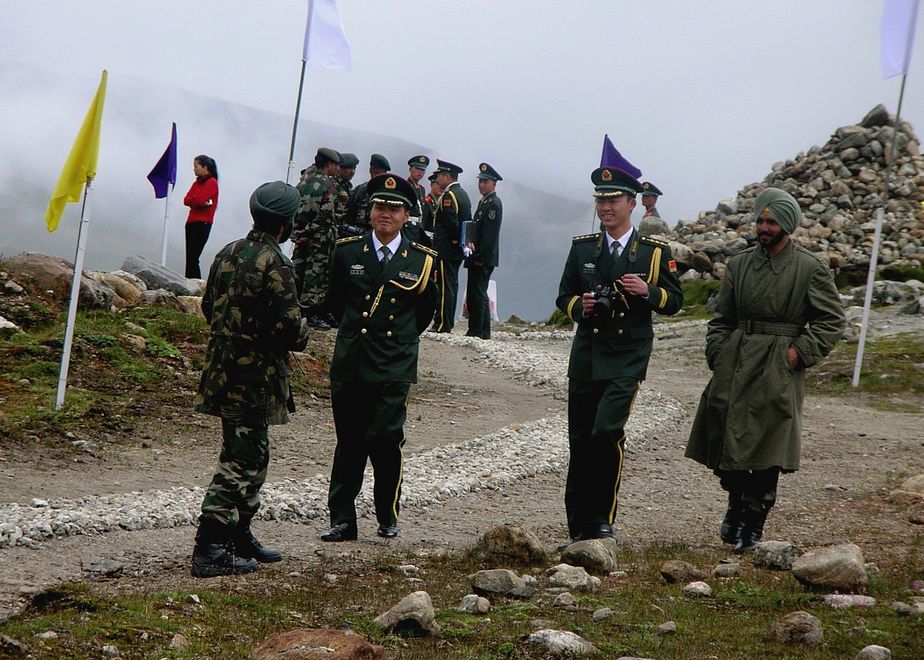ASSOCIATE EDITOR ZHI JIAO DANIELLE GOH WRITES – When Albert Einstein warned about the danger of nuclear weapons, he famously said: “I know not with what weapons World War III will be fought, but World War IV will be fought with sticks and stones.” Recently, tensions between Chinese and Indian forces increased on the vague ‘border’ in the Galwan River valley that led to two nuclear powers actually fighting hand-to-hand with iron rods studded with nails. By mutual agreement, border-patrol forces are not armed with serious weapons. Even so, temperatures and tempers started to flare: the Chinese accused the Indians troops of demolishing infrastructure they had built on the Chinese side, while Indians insisted that it was the Chinese who crossed into Indian territory. Narendra Modi, Prime Minister of India, gave a televised statement on Friday, vowing that India would defend its border with military force if necessary. This violent clash is the first collision since 1975 and has resulted in 20 announced Indian deaths. The Chinese have not come clean of their losses.
The border war between India and China goes all the way back to 1913, when British India and Tibet – during Chinese’s century of humiliation – drew up the borders known as the McMahon Line. China never recognized this agreement and refused to acknowledge Tibet’s suzerainty to make a decision for itself.
In 1962, following the Dalai Lama’s successful asylum request to India and India’s defensive Forward Policy, Chinese troops advanced and sought to expel Indian forces from Aksai Chin, a disputed territory along the borders. Fortunately, the war lasted just a month, with China gaining the upper hand until a ceasefire was called.
Both the Chinese and the Indians continue to respect a 1996 bilateral agreement that says, “neither side shall open fire… conduct blast operations or hunt with guns or explosives within two kilometers of the Line of Actual Control”. This would seem to indicate that neither side wants to escalate tensions further. More importantly, Sino-Indian border tensions must not play into China’s favor in the midst of fears of a second COVID-19 wave or between South and North Korea on the other side of the border, which are also of course not at peace. Resources and attention should be prioritized to prevent COVID-19 from reemerging extensively in China.
This isn’t the first time recently that China has risked territorial conflict. The Senkaku Islands in the East China Sea, a group of disputed uninhabited islands, created conflict with the Japanese due to discrepancy over historical ownership. This issue has been used as a nationalist tool from time to time by both sides. But the leaders of the two reached an important understanding in 1972 during normalization talks, resulting in a mutual recognition to “shelve” the issue of the Senkaku Islands until some future time. As Deng famously said about the islands, “people of our generation don’t have sufficient wisdom to settle this problem.”
Similarly, perhaps now China and India should acknowledge that the border issue is too complicated for the current generation of Chinese and Indians who are both still struggling to fashion their nations into stable economic global powers. A miscalculated step could trigger deep deterioration for both sides, undermining years of efforts and poisoning their economic recovery from the pandemic. An aggressive and hostile military impression would also be counterproductive for China, whose image has been damaged by the coronavirus crisis. Neighboring countries such as Pakistan and Nepal may be forced to choose sides if tension persists.
At the same time, the weakness and incoherency of American foreign policy offers Beijing a chance to recover and strengthen its diplomatic ties in the region. Chinese experts offering advice to India during the latter’s worst locust season, amid the pandemic, was a great example of building relations with ‘soft power’. Hopefully, the economics and educational systems of China and India will continue to evolve, and the time will come a time where future generations, and modernized young minds, can come up with a better border solution that both forefathers from both countries can accept. In the meantime, military “talks” are taking place between the two sides at Galwan in an effort to defuse current tensions.

